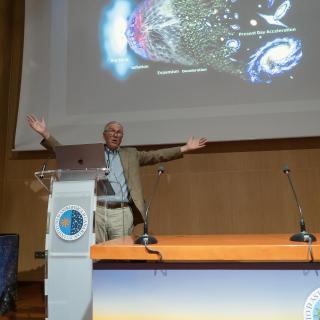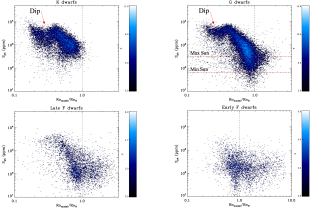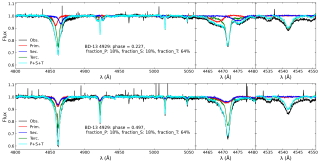Feedback-driven winds from star formation or active galactic nuclei might be a relevant channel for the abrupt quenching of star formation in massive galaxies. However, both observations and simulations support the idea that these processes are non-conflictingly co-evolving and self-regulating. Furthermore, evidence of disruptive events that are capable of fast quenching is rare, and constraints on their statistical prevalence are lacking. Here we present a massive starburst galaxy at redshift z=1.4, which is ejecting ~46% of its molecular gas mass at a startling rate of >10,000 solar masses per year. A broad component that is red-shifted from the galaxy emission is detected in four (low and high J) CO and [C I] transitions and in the ionized phase, which ensures a robust estimate of the expelled gas mass. The implied statistics suggest that similar events are potentially a major star-formation quenching channel. However, our observations provide compelling evidence that this is not a feedback-driven wind, but rather material from a merger that has been probably tidally ejected. This finding challenges some literature studies in which the role of feedback-driven winds might be overstated.
It may interest you
-
 The Instituto de Astrofísica de Canarias (IAC) has received a visit from Robert P. Kirshner, Executive Director of the Thirty Meter Telescope International Observatory (TIO) . During his stay at the IAC headquarters in La Laguna, he was welcomed by the center’s director, Valentín Martínez Pillet, and by the deputy director, Eva Villaver Sobrino, along with other members of the research institute. During his visit, he was able to learn firsthand about the institution’s scientific and technological capabilities and gave a colloquium titled The Thirty Meter Telescope and Science of the FutureAdvertised on
The Instituto de Astrofísica de Canarias (IAC) has received a visit from Robert P. Kirshner, Executive Director of the Thirty Meter Telescope International Observatory (TIO) . During his stay at the IAC headquarters in La Laguna, he was welcomed by the center’s director, Valentín Martínez Pillet, and by the deputy director, Eva Villaver Sobrino, along with other members of the research institute. During his visit, he was able to learn firsthand about the institution’s scientific and technological capabilities and gave a colloquium titled The Thirty Meter Telescope and Science of the FutureAdvertised on -
 It’s been decades since the need to study other stars to understand the past, present and future of the Sun was realized. One important aspect that has been investigated is the magnetic activity of stars for which we cannot fully grasp the mechanisms involved. Indeed, the origin of stellar magnetic cycles or the dependence of the magnetic activity on the stellar properties are not completely understood. This knowledge improves not only our understanding of the physics involved in stellar evolution but also affects the study of the Sun to better predict high-energy events and the betterAdvertised on
It’s been decades since the need to study other stars to understand the past, present and future of the Sun was realized. One important aspect that has been investigated is the magnetic activity of stars for which we cannot fully grasp the mechanisms involved. Indeed, the origin of stellar magnetic cycles or the dependence of the magnetic activity on the stellar properties are not completely understood. This knowledge improves not only our understanding of the physics involved in stellar evolution but also affects the study of the Sun to better predict high-energy events and the betterAdvertised on -
 The most massive stars in the universe are often born and evolve in binary and multiple systems — that is, in pairs or groups bound by their mutual gravity. Understanding how they interact with each other is key to explaining everything from their formation to the impact they have on the galaxies they inhabit. The MONOS project (Multiplicity Of Northern O-type Spectroscopic systems) aims to study these systems in the northern sky, combining spectroscopic observations (which analyze light split into its component colors to measure stellar velocities and physical properties) with photometryAdvertised on
The most massive stars in the universe are often born and evolve in binary and multiple systems — that is, in pairs or groups bound by their mutual gravity. Understanding how they interact with each other is key to explaining everything from their formation to the impact they have on the galaxies they inhabit. The MONOS project (Multiplicity Of Northern O-type Spectroscopic systems) aims to study these systems in the northern sky, combining spectroscopic observations (which analyze light split into its component colors to measure stellar velocities and physical properties) with photometryAdvertised on
